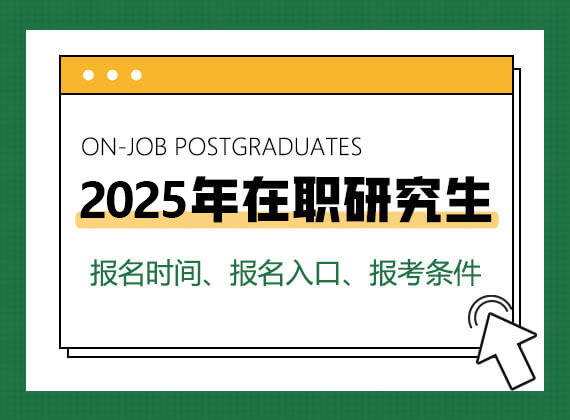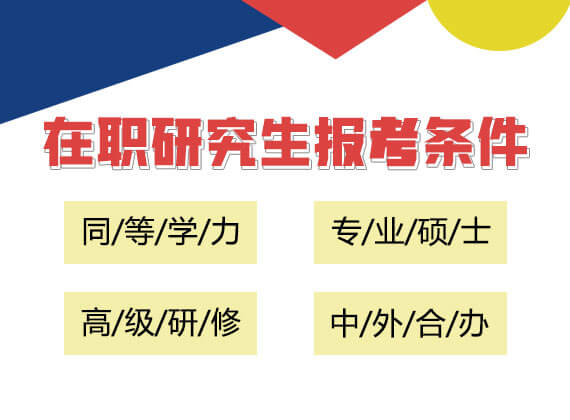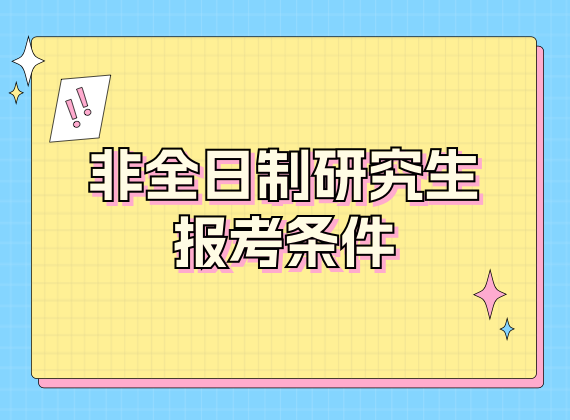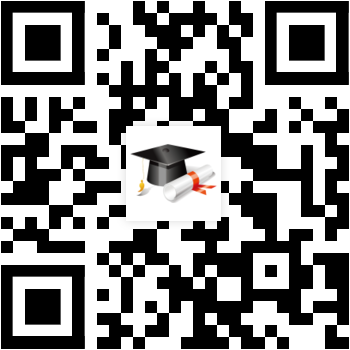同等学力申硕英语精选试题2
来源:在职研究生招生信息网 发布时间:2015-07-23 10:34:25
Passage Two
According to a study, intellectual activities make people eat more than when just resting. This has shed new light on brain food. This finding might also help explain the obesity epidemic of a society in which people often sit.
Researchers split 14 university student volunteers into three groups for a 45-minute session of either relaxing in a sitting position, reading and summarizing a text, or completing a series of memory, attention, and alert tests on the computer. After the sessions, the participants were invited to eat as much as they pleased.
Though the study involved a very small number of participants, the results were stark. The students who had done the computer tests downed 253 more calories or 29.4 percent more than the couch potatoes. Those who had summarized a text consumed 203 more calories than the resting group.
Blood samples taken before, during, and after revealed that intellectual work cause much bigger fluctuations in glucose (葡萄糖) levels than rest periods, perhaps owing to the stress of thinking.
The researchers figure the body reacts to these fluctuations by demanding food to restore glucose-the brain’s fuel. Glucose is converted by the body from carbohydrates (碳水化合物) and is supplied to the brain via the bloodstream. The brain cannot make glucose and so needs a constant supply. Brain cells need twice as much energy as other cells in the body.
Without exercise to balance the added intake, however, such “brain food” is probably not smart. Various studies in animals have shown that consuming fewer calories overall leads to sharper brains and longer life, and most researchers agree that the findings apply, in general, to humans.
And, of course, eating more can make you fat.
“Caloric overcompensation following intellectual work, combined with the fact that we are less physically active when doing intellectual tasks, could contribute to the obesity epidemic currently observed in industrialized countries,” said lead researcher Jean-Philippe Chaput at Laval University in Quebec City, Canada. “This is a factor that should not be ignored, considering that more and more people hold jobs of an intellectual nature,” the researcher concluded.
37. The passage mainly tells us that .
A. consuming fewer calories can lead to sharper brains
B. thinking consumed more calories than resting
C. resting more can make people fat
D. brain cells need more energy than other cells in the body
38. It is implied that to avoid obesity, people who have to sit long should .
A. think more and eat less B. increase the intake of vitamins
C. skip some meals D. eat less potatoes
39. The word “stark” in the 3rd paragraph is closest in meaning to “ ”
A. negative B. obscure C. absolute D. ambiguous
40. According to the research, which of the following activities consumed the most calories?
A. Relaxing in a sitting position
B. Reading professional books
C. Summarizing a text
D. Completing tests on the computer
41. According to the passage, eating less may make people .
A. smarter B. less intelligent
C. more emotional D. live a shorter life
42. One of the reasons for the obesity epidemic currently observed in industrialized countries is that in these countries .
A. people take different exercises
B. fewer people watch their weight
C. fewer people hold physical jobs
D. foods are much cheaper
Passage three
One of the simple pleasures of a lazy summer day is to be able to enjoy a refreshing slice of watermelon either at the beach, at a picnic, or fresh from the farmer’s market. Delicious and nutritious, watermelon is one of those guilt-free foods we can all enjoy: one cup of watermelon packs only about 50 calories! Watermelons are not only cooling treats for when the mercury starts to rise; they are also loaded with healthy nutrients such as vitamin A, vitamin C, lycopene (番茄红素), and etc. Vitamins A and C and lycopene are antioxidants, which are substances that work to help get rid of the harmful effects of substances.
Research has suggested that a diet high in fruits and vegetables that have plenty of antioxidants can reduce the risk of heart disease, some cancers, and some other dangerous diseases. A cup of watermelon provides 25﹪ of the recommended daily value of vitamin C and 6﹪ of the recommended daily value of vitamin A. Additionally, researchers have found that lycopene, a nutrient most traditionally associated with tomatoes, is found in equal or greater quantities in watermelon.
Watermelons also provide significant amounts of vitamin B6 and vitamin B1, both of which are necessary for energy production. In combination with the minerals and vitamins already described, these B vitamins add to the high nutrient richness of watermelon. Due to its high water content(watermelon is 92﹪ water by weight) and low calorie count, watermelon is a good choice to satisfy your hunger while you try to eat a healthy diet. Think of them as nature’s answer to the heavily marketed “vitamin water” craze.
Beside the textured, watery flesh of the fruit, watermelon seeds are also widely eaten as a snack. They are rich in iron and protein and are often pressed for oil or roasted and seasoned.
So if you are planning on dining outdoor this summer, or simply looking for a quick and convenient refreshment to serve to unexpected or reckless children, reach for watermelon. The kids will enjoy its crisp taste and messy juices, the adults will enjoy its refreshing flavors, and everyone will benefit from its nutritious value.
43. We don’t feel guilt even if we eat more watermelon because .
A. it is delicious B. it is nutritious
C. it contains low calories D. it contains antioxidants
44. The phrase “when the mercury starts to rise” (Para.1) probably means “ ”.
A. in summer evenings B. on sunny days
C. when people are thirsty D. when it is getting hot
45. How many cups of watermelon can satisfy the daily need for vitamin C?
A. 1 B. 2 C. 3 D. 4
46. By saying “Think of them as nature’s answer to the heavily marketed” vitamin water “craze”, the author means .
A. watermelon can take the place of vitamins
B. with watermelon, people don’t have to buy vitamin water
C. natural foods are much better than the manufactured ones
D. the vitamin water has been over-advertised
47. Watermelon seeds are often .
A. fried in oil B. stored for seasons
C. prepared with spice D. pressed before being cooked
48. The best title of the passage is .
A. Watermelon-the Most Enjoyable Refreshment
B. The Wonders of Watermelon
C. The Nutrients in Watermelon
D. Watermelon-the Best Summer Food for Children
Passage Four
Initial voyages into space introduced questions scientists had never before considered. Could an astronaut swallow food in zero gravity? To keep things simple, astronauts on the Project Mercury ate foods squeezed out of tubes. It was like serving them baby food in a toothpaste container.
But these early tube meals were flavorless, and astronauts dropped too many pounds. “We know that astronauts have lost weight in every American and Russian manned flight,” wrote NASA scientists Malcolm Smith in 1969. “We don’t know why.” Feeding people in space was not as easy as it looked.
Floating around in space isn’t as relaxing as it might sound. Astronauts expend a lot of energy and endure extreme stresses on their bodies. Their dietary requirements are therefore different from those of their gravity-bound counterparts on Earth. For example, they need extra calcium to compensate for bone loss. “A low-salt diet helps slow the process, but there are no refrigerators in space, and salt is often used to help preserve foods,” says Vickie Kloeris of NASA. “We have to be very careful of that.”
By the Apollo missions, NASA had developed a nutritionally balanced menu with a wide variety of options. Of course, all the items were freeze-dried or heat-treated to kill bacteria, and they didn’t look like regular food.
Today, the most elaborate outer-space meals are consumed in the International Space Station (ISS), where astronauts enjoy everything from steak to chocolate cake. The ISS is a joint venture between the U.S. and Russia, and diplomatic guidelines dictate the percentage of food an astronaut must eat from each country. NASA’s food laboratory has 185 different menu items, Russia offers around 100, and when Japan sent up its first crew member in 2008, about 30 dishes came with him. Due to dietary restrictions and storage issues, astronauts still can’t eat with whatever they want whenever they feel like it.
In 2008, NASA astronaut and ISS crew member Sandra Magnus became the first person to try to cook a meal in space. It took her over an hour to cook onions and garlic in the space station’s food warmer, but she managed to create a truly delicious dish: grilled tuna(金枪鱼) in a lemon-garlic sauce-eaten from a bag, of course.
49. Which of the following is true about the early space meals?
A. They had to be eaten from a bag.
B. They tasted better than they looked.
C. They could not make eating as easy as possible.
D. They were not nutritious enough for astronauts.
50. It seems that astronauts’ weight loss .
A. was an unusual problem among astronauts
B. was what puzzled the early scientists
C. caused new problems in space flights
D. drew the attention of the general public
51. According to Vickie Kloeris, serving a low-salt diet in space .
A. is easier said than done B. is not absolutely necessary
C. has worked as expected D. will be the future trend
52. In the International Space Station, .
A. there is enough space to store enough foods for astronauts
B. there is a selection of flavored foods from a dozen countries
C. astronauts in general prefer foods from their own countries
D. astronauts’ need to eat their favorite foods can’t always be met
53. It can be learned that Sandra Magnus’ cooking in space .
A. left much to be desired B. wasn’t worth the effort
C. was quite satisfactory D. has inspired the others
54. The passage mainly introduces .
A. the variety of food options in space
B. the dietary need of astronauts in space
C. the problems of living in the space station
D. the improvement of food offered in space
Passage Five
Is it possible to be both fat and fit-not just fit enough to exercise, but fit enough to live as long as someone a lot lighter? Not according to a 2004 study from the Harvard School of Public Health which looked at 115,000 nurses aged between 30 and 55. Compared with women who were both thin and active, obese(overweight) but active women had a mortality rate that was 91﹪ higher. Though far better than the inactive obese (142% higher), they were still worse off than the inactive lean (5% higher). A similar picture emerged in 2008 after researchers examined 39,000 women with an average age of 54. Compared with active women of normal weight, the active but overweight were 54% more likely to develop heart disease.
That’s settled, then. Or is it? Steven Blair, a professor of exercise science at the University of South Carolina, describes the official focus on obesity as an “obsession… and it’s not grounded in solid data”.
Blair’s most fascinating study, in the Journal of American Medical Association in 2007, took 2,600 people aged 60 and above, of various degrees of fatness, and tested their fitness on the exercise device, rather than asking them to quantify it themselves. This is an unusually rigorous approach, he claims. Since many rival surveys ask participants to assess their own fitness, or ignore it as a factor altogether.
“There is an ‘association’ between obesity and fitness,” he agrees, “but it is not perfect. As you progress towards overweight, the percentage of individuals who are fit does go down. But here’s a shock: among classⅡ obese individuals [with a body mass index between 35 and 39.9], about 40% or 45% are still fit. You simply cannot tell by looking whether someone is fit or not. When we look at these mortality rates in fat people who are fit, we see that the harmful effect of fat just disappears: their death rate during the next decade is half that of the normal weight people who are unfit.”
One day-probably about a hundred years from now-this fat-but-fit question will be answered without the shadow of a doubt. In the meantime, is there anything that all the experts agree on? Oh yes: however much your body weighs, you’ll live longer if you move it around a bit.
55. It can be learned that the 2008 research .
A. posed a challenge to the 2004 study
B. confirmed the findings of the 2004 study
C. solved the problems left behind by the 2004 study
D. had a different way of thinking from the 2004 study
56. Steven Blair probably describes the previous studies as .
A. unreliable B. uncreative C. unrealistic D. untraditional
57. The major difference between Blair’s study and the previous research is that .
A. Blair excluded the participants’ fitness as a factor
B. Blair guessed the participants’ fitness after weighing them
C. Blair required the participants to assess their own fitness
D. Blair evaluated the participants’ fitness through physical tests
58. Blair’s study proves that .
A. the weight problem should be taken seriously
B. weight and fitness are strongly connected
C. it is possible to be both fat and fit
D. fat people have a higher death rate
59. It can be seen from the description of these studies that the author .
A. shows no preference for any researcher
B. finds no agreement between the researchers
C. obviously favors the Blair study
D. obviously favors the Harvard study
60. The purpose of writing this passage is to .
A. call on people to pay attention to weight problem
B. present the different findings of various weight studies
C. compare the strength and weakness of different studies
D. offer suggestions on how to remain fit and live longer
Part IV Cloze (15minutes, 15points)
Directions: in this part, there is a passage with 15 blanks. For each blank there are 4 choices marked A, B, C and D choose the best answer foe each blank and mark the corresponding letter with a single bar across the square brackets on your machine-scoring ANSWER SHEET.
Most children with healthy appetites are ready to eat almost anything that is offered to them. A child rarely dislikes food 61 it is badly cooked. The 62 a meal is cooked and served is most important and an 63 served meal will improve a child’s appetite. Never ask a child 64 he likes or dislikes a food and never 65 likes and dislikes in front of him or allow anybody else to do so. If the father says he hates fat meat or the mother 66 vegetables, in the child’s hearing he is 67 to copy this procedure. Take it 68 granted that he likes everything and he probably will. Nothing healthful should be omitted from the meal because of a 69 dislike. At meal times it is a good 70 to give a child a small portion and let him come back for a second helping rather than give him as 71 as he is likely to eat all at once. Do not talk too much to the child during meal times, but let him go on with his food; and do not 72 him to leave the table immediately after a meal or he will soon learn to swallow his food 73 he can hurry back to his toys. Under 74 circumstances must a child be coaxed (哄骗) 75 forced to eat.
61. A. if B. until C. that D. unless
62. A. procedure B. process C. way D. method
63. A. adequately B. attractively C. urgently D. eagerly
64. A. whether B. what C. that D. which
65. A. remark B. tell C. discuss D. argue
66. A. opposes B. denies C. refuses D. offends
67. A. willing B. possible C. obliged D. likely
68. A. with B. as C. over D. for
69. A. supposed B. proved C. considered D. related
70. A. point B. custom C. idea D. plan
71. A. much B. little C. few D. many
72. A. agree B. allow C. force D. persuade
73. A. so B. until C. lest D. although
74. A. some B. any C. such D. no
75. A. or B. nor C. but D. neither
Paper Two试卷二
Part I Translation (30 minutes, 20 points)
Section A
Directions: Translate the following passage into Chinese. Write your translation on the ANSWER SHEET.
The new year always brings an old problem for students who return to campus after a long winter holiday. As the spring semester begins, some students find themselves having to adapt to college life all over again - a process they refer to as "the holiday blues", or "post-holiday syndrome".
Students must return to the uncomfortable confines of life with roommates in a crowded dormitory. Just ask 19-year-old Jiang Cheng, who lived in a spacious, well-decorated home in Tianjin over the break. Now back in the university, Jiang is sleeping on a wooden board and a few blankets, which causes his body aching.
Section B
Directions: Translate the following passage into English. Write your translation on the ANSWER SHEET.
2010上海世博会的核心是创新和互动。创新是灵魂,而文化交流也是世博会的一项重要任务。在新纪元,2010世博会将致力于以人为本的发展,科技创新,文化差异以及双赢的未来合作,因此在新世纪高度的创新和互动将会是组成这一主旋律的重要音符。
Part II Writing (30 minutes, 15 points)
Directions:In this part,you are to write within 30 minutes a composition of no less than 150 words about “Low Carbon Living.”.
1、提倡低碳生活的原因
2、低碳生活的具体做法
3、我怎样做
Please remember to write it clearly on the ANSWER SHEET.
上一篇: 同等学力申硕英语精选试题1
下一篇: 2015年同等学力申硕工商管理综合试题






















